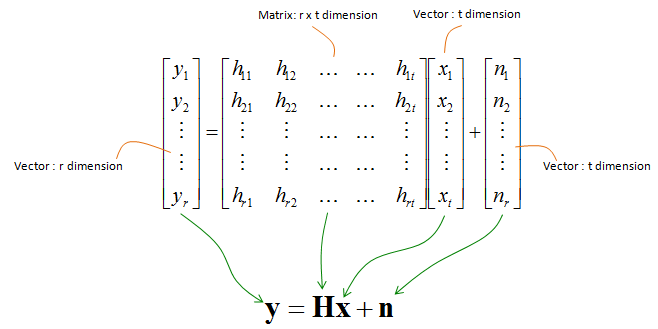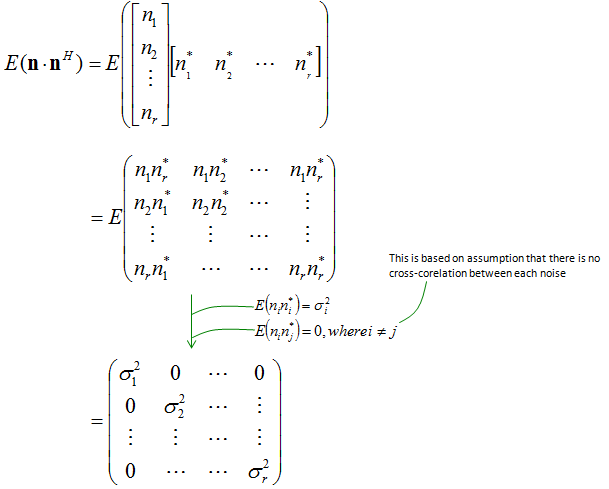|
Communication Technology |
||
|
Channel Model - Noise Model
From the generalized mode described above, you can derive a sort of special cases depending on the number of Tx antenna and Rx antenna. As a first case, let's think of the case where 't' (the number of Tx antenna) and 'r' (the number of Rx antenna) are greater than 1. This is what we call MIMO and the system model for this case is same as the system mode in generic case as shown below.
There are so many things to be explained about this case.. so I would rather put it off to put down the full description. You can refer to '2 x 2 MIMO case' described in following section as a more specific example of this case (t = 2, r = 2).
As a side note, I would describe a little bit of how we can estimate noise distribution of this case. If we assume that noise coming into each antenna is independent (none correlated), we can estimate the distribution of noise for each Rx antenna as shown below. This is ideal model.. in reality, the two important assumption (noise to each Rx antenna is independent and the distribution of each noise is in Guassian distribution) may not hold true and you may find some thesis or paper for the case where these assumptions are not met. But for most text book level description, we describe the model based on the condition where our assumptions holds true.
|
||

